Difference Between Line and Line Segment - Definition, Examples, Quiz, FAQ, Trivia
Learn geometry basics with clear explanations and visual examples for young students
What is a Line?
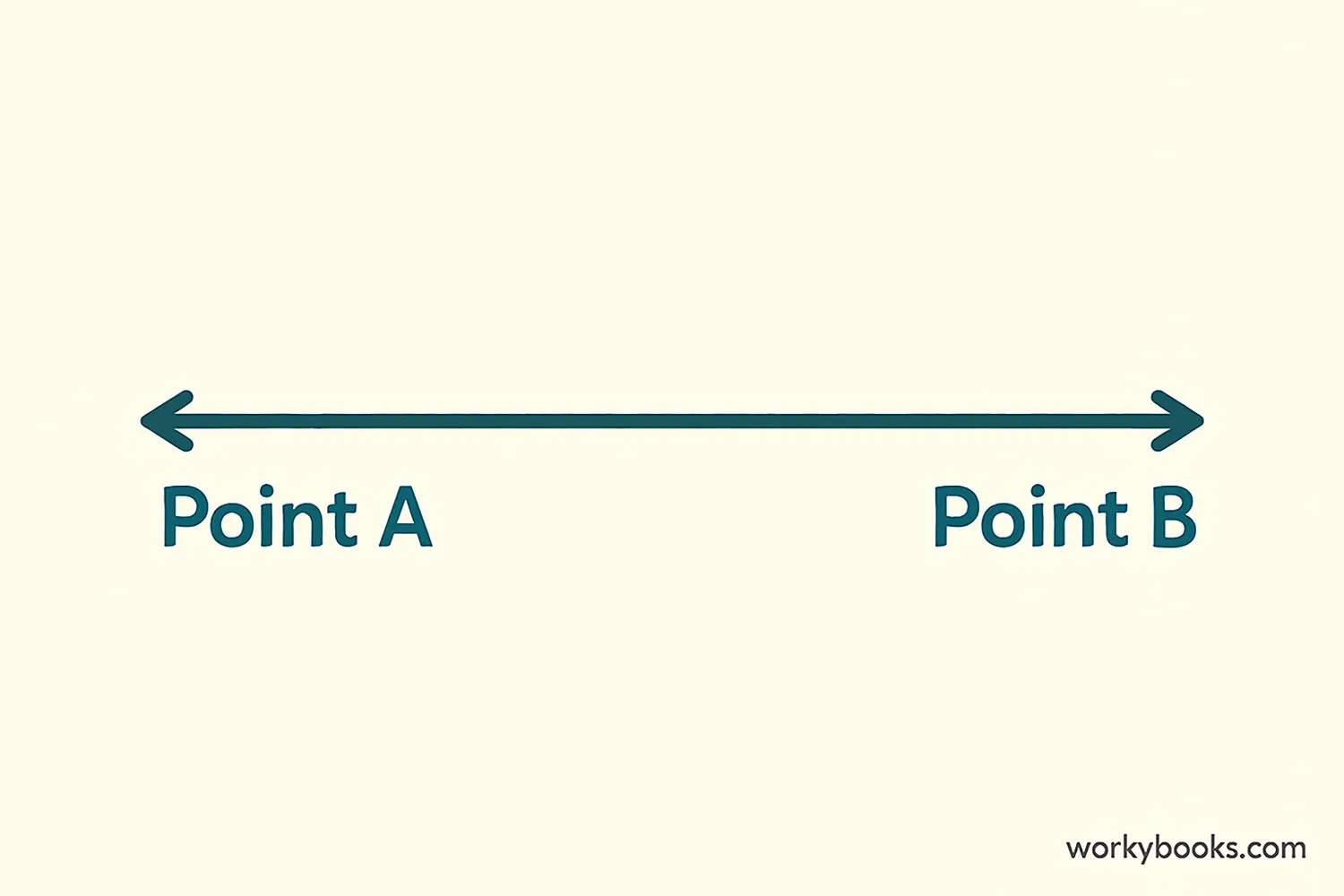
In geometry, a line is a straight path that goes on forever in both directions. Imagine a straight road that never ends - that's what a line is like!
Key features of a line:
- It has no beginning or end (no endpoints)
- It extends infinitely in both directions
- It has no thickness (it's perfectly thin)
- It is perfectly straight
We draw lines with arrows at both ends to show they go on forever. In math, we name lines using any two points on the line, like "Line AB" or "AB" with a line symbol above it.
Key Concept
A line has no endpoints and extends infinitely in both directions.
What is a Line Segment?
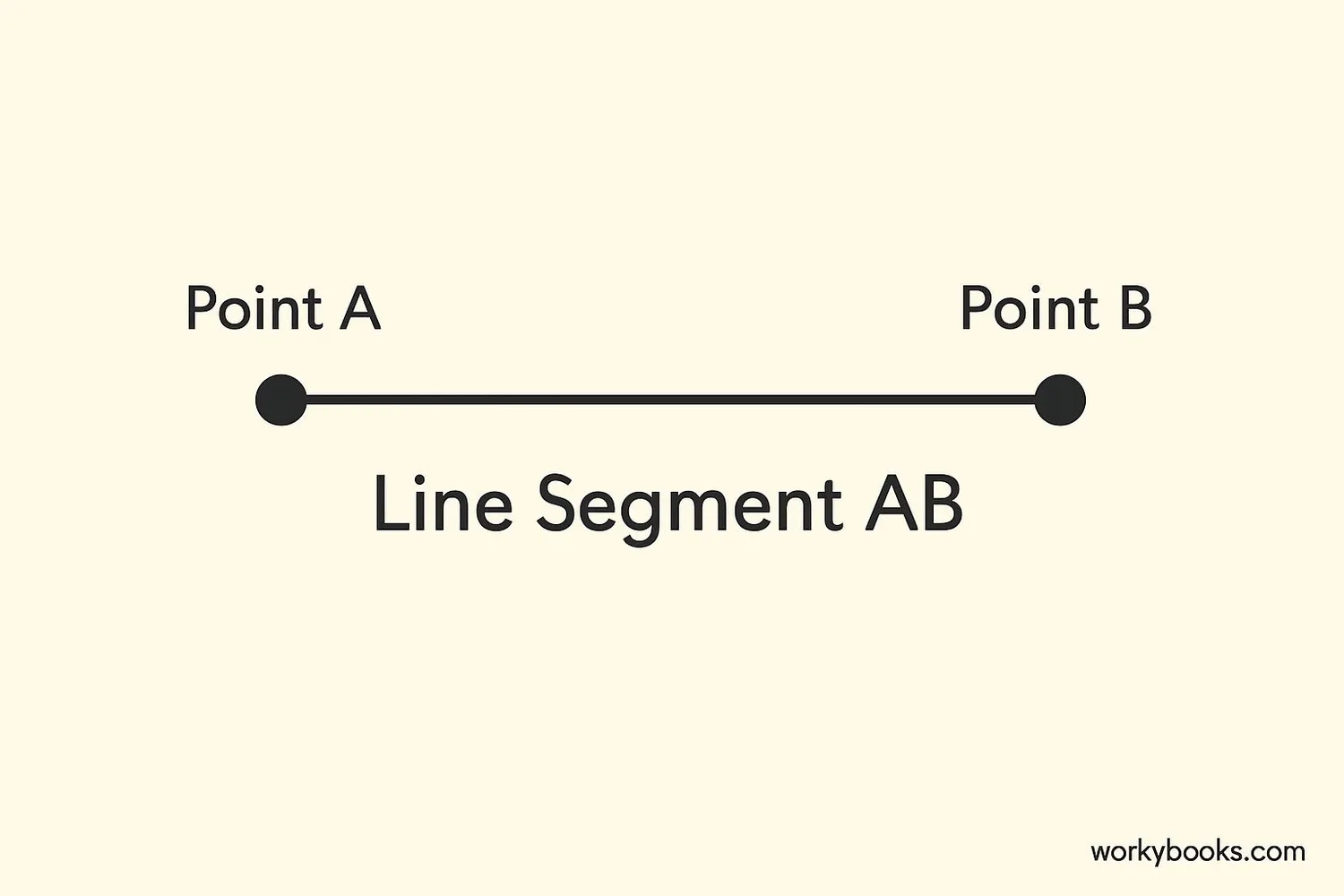
A line segment is part of a line that has two endpoints. Think of it like a piece of string with two ends. It's a specific section of a line.
Key features of a line segment:
- It has two endpoints
- It has a definite length
- It does not extend beyond its endpoints
- It is straight between the two points
We name line segments using their endpoints, like "Segment AB" or "AB" with a line symbol above it. Line segments are very common in everyday objects - the edge of your book, a pencil, or a ruler are all examples of line segments.
Remember
A line segment has two endpoints and a fixed length.
Key Differences
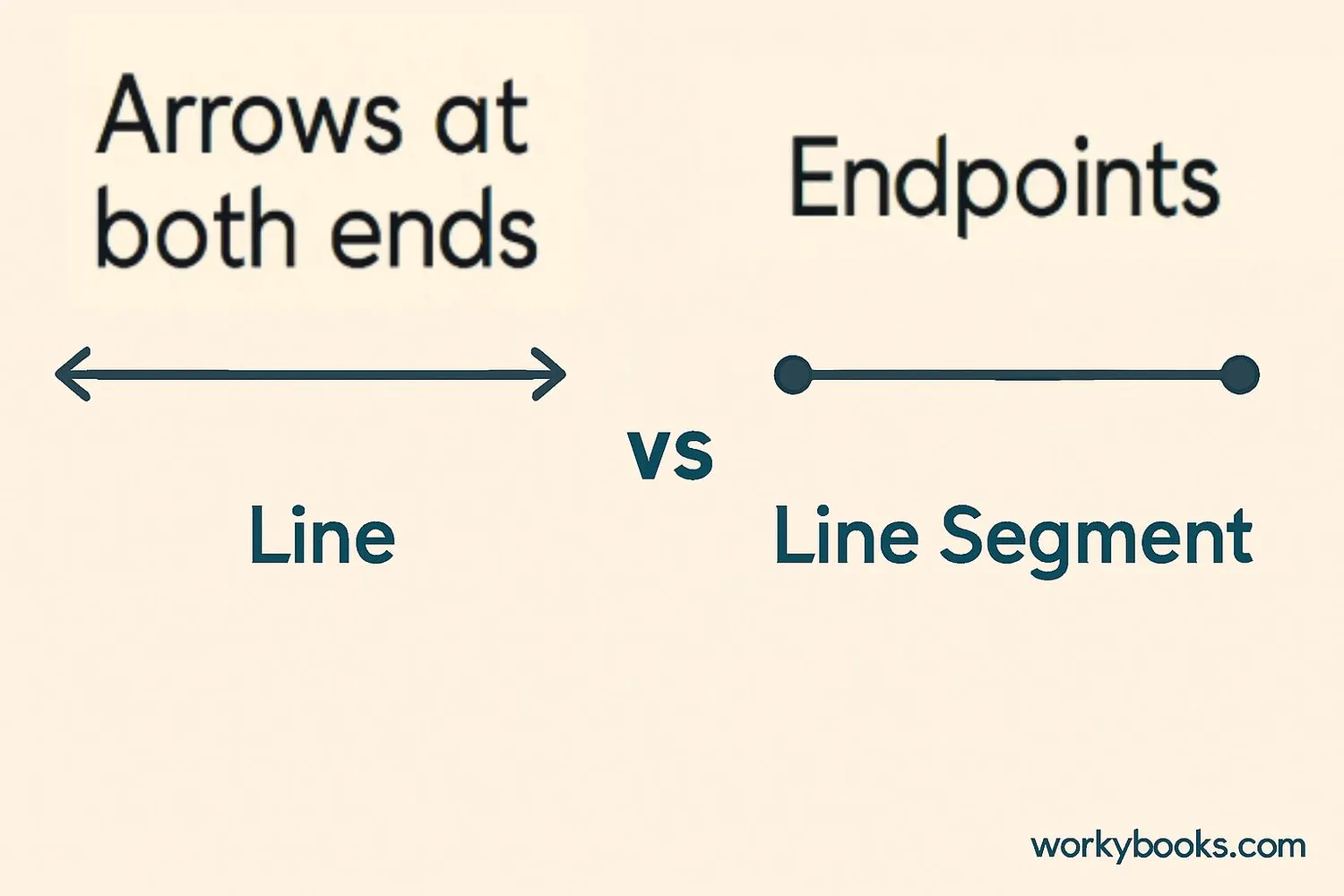
Now that we know what lines and line segments are, let's look at how they are different:
| Feature | Line | Line Segment |
|---|---|---|
| Endpoints | No endpoints | Two endpoints |
| Length | Infinite | Definite (measurable) |
| Extends | Infinitely in both directions | Only between endpoints |
| Symbol | Arrows at both ends | No arrows, just endpoints |
| Example | A straight road that goes on forever | A pencil, a piece of string |
| Name | Named with two points (e.g., Line AB) | Named with two endpoints (e.g., Segment AB) |
Remember This
The most important difference is that a line has no endpoints and goes on forever, while a line segment has two endpoints and a fixed length.
What is a Ray?
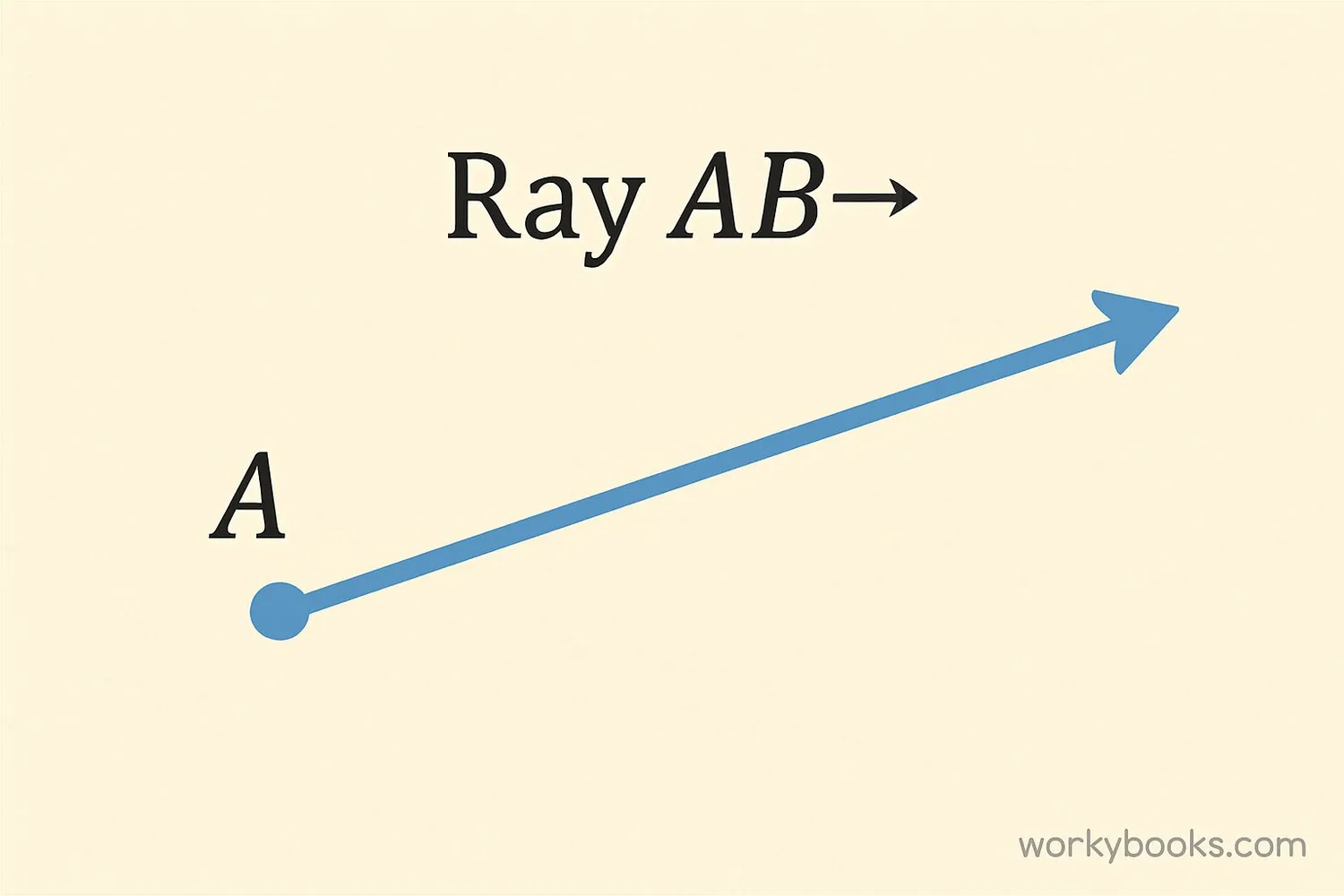
Now that we understand lines and line segments, let's learn about a ray. A ray is like a mix between a line and a line segment.
Key features of a ray:
- It has one endpoint
- It extends infinitely in one direction
- It has no definite length (it goes on forever in one direction)
We name rays by their endpoint and one other point on the ray. The endpoint always comes first. For example, if a ray starts at point A and passes through point B, we call it "Ray AB".
Think of a ray like a sunbeam - it starts at the sun (the endpoint) and travels out into space forever in one direction.
Quick Summary
Line: No endpoints, infinite in both directions
Line Segment: Two endpoints, definite length
Ray: One endpoint, infinite in one direction
Real-World Examples
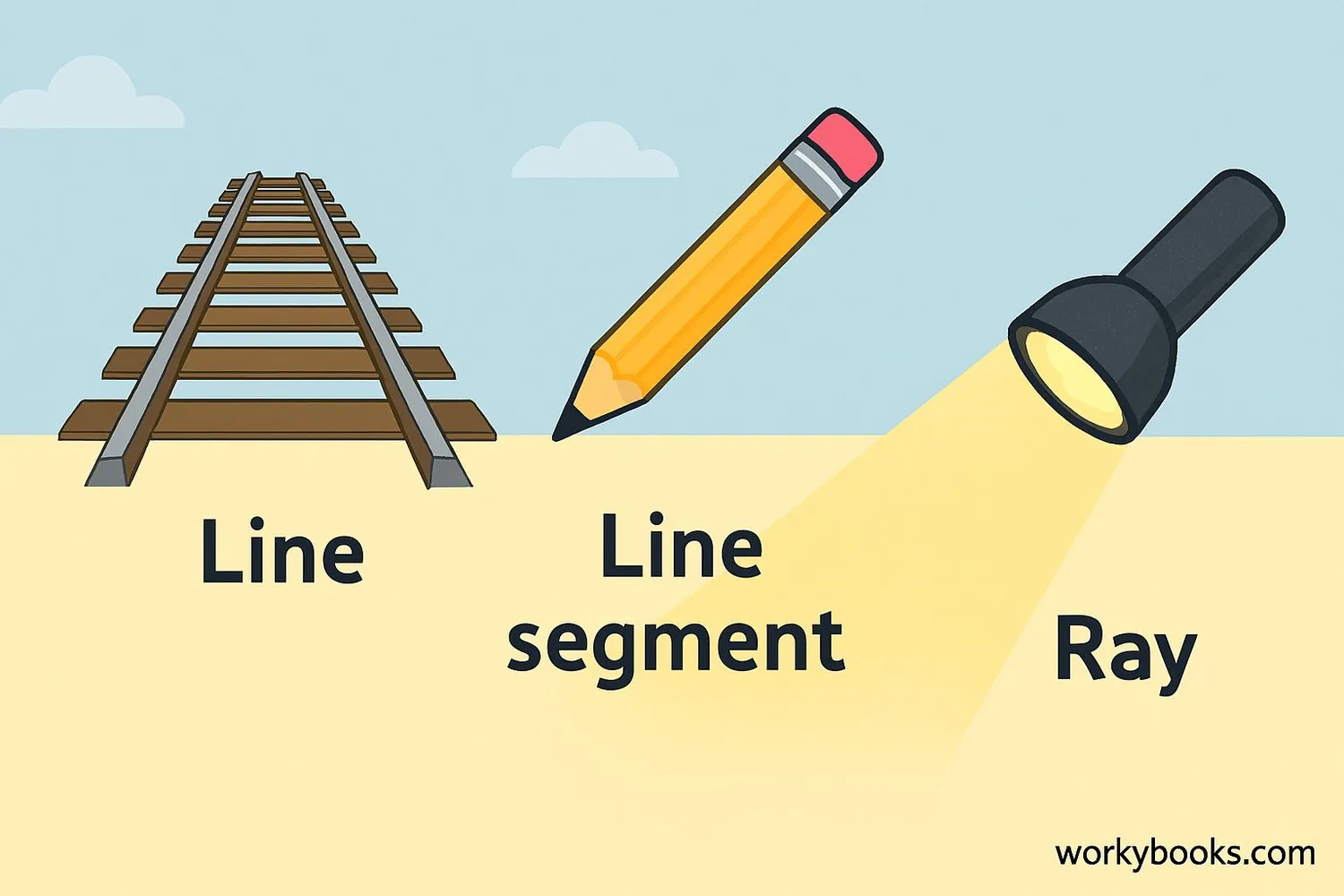
Geometry is all around us! Let's look at some real-world examples:
Line examples:
- Railway tracks extending to the horizon
- A straight road that goes on forever
- A laser beam in space (with nothing to stop it)
- A pencil or a piece of chalk
- The edge of your desk or book
- A ruler
- A beam of light from a flashlight
- A sunbeam coming through a window
- A laser pointer beam
Activity
Look around your room. Can you find three examples of line segments? What about rays? Can you find something that represents a line?
Practice Quiz
Test your knowledge with this 5-question quiz. Choose the correct answer for each question.
Frequently Asked Questions
Here are answers to common questions about lines and line segments:
Geometry Trivia
Discover interesting facts about geometry:
Ancient Geometry
The word "geometry" comes from Greek words meaning "earth measurement." Ancient Egyptians developed geometry to measure land after Nile River floods.
Straightest Lines
Laser beams create the straightest lines humans can make. They can stay straight for hundreds of kilometers with special equipment!
Space Geometry
In space, light travels in straight lines. This is why we see constellations as patterns - the light from stars travels straight to our eyes.
Longest Line Segment
The longest straight-line path on Earth is from Pakistan to Russia, spanning approximately 32,000 km! This path goes through 18 countries and 3 seas.





